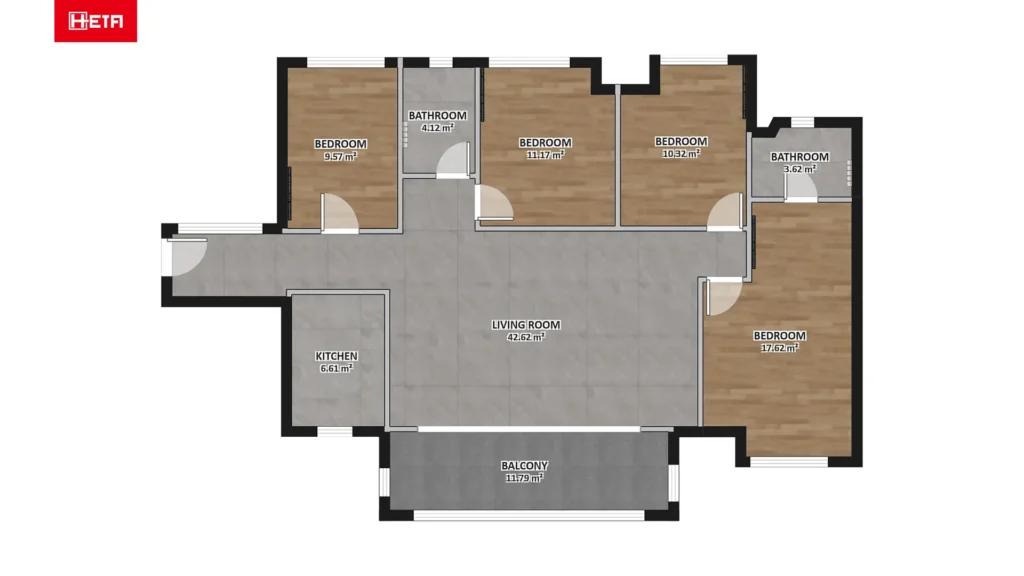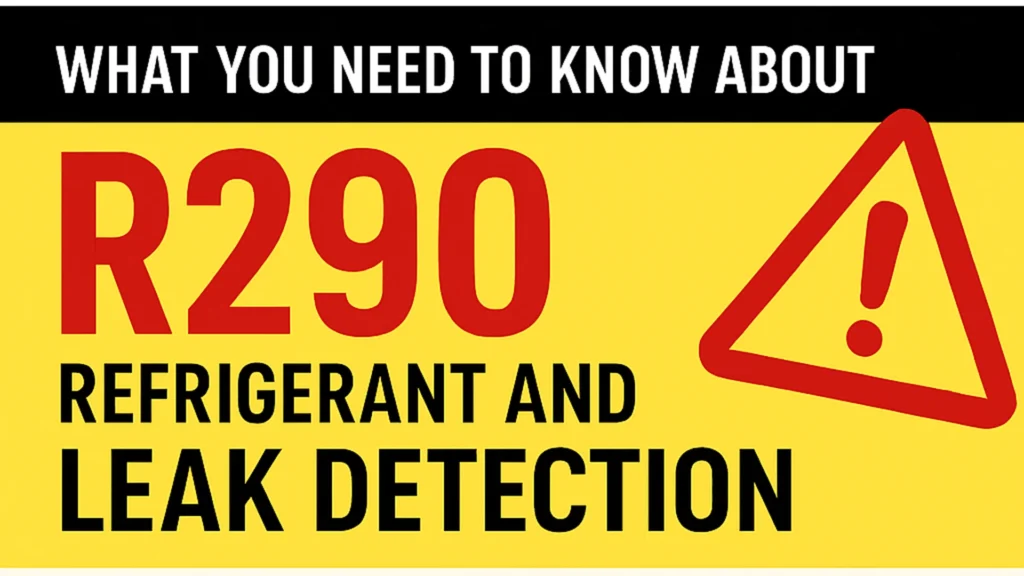
Sommario
1. Introduzione: abbracciare il comfort tutto l'anno
Scegliere la pompa di calore aria-acqua (AWHP) giusta per una casa europea significa garantire riscaldamento, raffrescamento e acqua calda sanitaria affidabili in tutte le stagioni. A differenza dei sistemi monouso, le AWHP estraggono l'energia termica dall'aria esterna e la distribuiscono tramite circuiti idraulici, rendendole versatili ed efficienti dal punto di vista energetico. Che si installi un riscaldamento a pavimento, radiatori tradizionali o ventilconvettori, e si fornisca acqua calda sanitaria, una AWHP adeguatamente dimensionata garantisce il massimo comfort, bollette energetiche più basse e una ridotta impronta di carbonio in tutte le diverse zone climatiche d'Europa.
2. Comprendere le capacità dell'AWHP
Le pompe di calore aria-acqua offrono molteplici funzionalità:
- Riscaldamento degli ambienti: Facendo circolare acqua calda attraverso reti sottopavimento (35–45 °C) o pannelli radianti (45–55 °C), le pompe di calore ad aria calda mantengono gli ambienti costantemente accoglienti.
- Raffreddamento: I modelli reversibili o l'integrazione con unità fan coil consentono il raffreddamento degli ambienti interni invertendo il ciclo del refrigerante o distribuendo acqua refrigerata.
- Acqua calda sanitaria (ACS):Le pompe di calore ad acqua calda possono riscaldare i serbatoi di accumulo fino a 50–60 °C, garantendo acqua calda abbondante ed efficiente per docce, lavaggio delle stoviglie e bucato.
Questo approccio "tutto in uno" è ideale per le famiglie europee che cercano comfort tutto l'anno senza caldaie o refrigeratori separati. Le pompe di calore ad aria calda (AWHP) massimizzano il COP (coefficiente di prestazione) stagionale, riducendo i costi operativi rispetto ai sistemi a gas, gasolio o resistenza elettrica.
3. Identificazione degli scenari di utilizzo domestico
Prima di selezionare una pompa di calore ad aria compressa (AWHP), valutare dove e come verrà utilizzato il calore (e il raffreddamento):
- Riscaldamento a pavimento (UFH)
- Funziona a temperature di flusso inferiori (tipicamente 35–45 °C)
- Fornisce un calore radiante e uniforme, ideale per ambienti open space e bagni
- Massimizza l'efficienza AWHP, soprattutto nelle nuove costruzioni o nelle case europee ben isolate
- Pannelli del radiatore
- Comune in molte case europee esistenti, in particolare nei progetti di ristrutturazione
- Richiede temperature di flusso più elevate (45–55 °C)
- Garantisce un riscaldamento rapido nelle camere da letto, nei soggiorni e nei corridoi
- Unità fan coil (FCU)
- Fornisce riscaldamento e raffreddamento rapidi soffiando aria condizionata direttamente
- Perfetto per le aree che necessitano di rapidi aggiustamenti della temperatura (ad esempio cucine, ripostigli)
- Funziona perfettamente con le pompe di calore AWHP reversibili per il raffreddamento estivo
- Acqua calda sanitaria (ACS)
- Una famiglia di cinque persone in genere necessita di circa 250 L/giorno (5 × 50 L)
- I serbatoi di accumulo da 200–300 L garantiscono acqua calda ininterrotta durante i picchi di utilizzo
- L'acqua calda sanitaria alimentata da AWHP può sostituire gli scaldabagni a gas o elettrici, riducendo le spese energetiche
4. Caso di studio: una casa di 140 mq nella Polonia meridionale

Per illustrare il corretto dimensionamento di una pompa di calore ad aria calda (AWHP), si consideri un'abitazione di 140 mq nella Polonia meridionale (temperatura di progetto intorno a -15 °C). L'abitazione comprende quattro camere da letto (cinque occupanti) con la seguente distribuzione del riscaldamento:
- Area di riscaldamento a pavimento: 60 mq
- Area del pannello del radiatore: 40 mq
- Riscaldamento supplementare: Piccoli radiatori o FCU in bagno e corridoio
- Domanda di ACS: 250 L/giorno
4.1 Calcolo del carico di riscaldamento degli ambienti
I progettisti HVAC europei spesso applicano una regola pratica di 150 W per mq in condizioni di progetto. Pertanto:
- Carico di riscaldamento a pavimento: 60 mq × 150 W = 9 kW
- Carico di riscaldamento del radiatore: 40 mq × 150 W = 6 kW
- Domanda totale di riscaldamento degli ambienti: 15 kW
Questo valore di 15 kW rappresenta la capacità necessaria per mantenere temperature interne confortevoli nelle giornate invernali più fredde.

4.2 Calcolo del carico di acqua calda sanitaria
Utilizzando la linea guida di 1 kW per 20 L di capacità di ACS all'ora:
- Fabbisogno giornaliero di acqua calda sanitaria: 250 L
- Carico ACS: 250 L ÷ 20 L/kW = 12,5 kW
Confrontando le due esigenze, 15 kW per il riscaldamento degli ambienti e 12,5 kW per l'acqua calda sanitaria, dimensioniamo la pompa di calore a Capacità nominale di 15 kWIn questo modo il sistema riesce a gestire contemporaneamente i picchi di richiesta di riscaldamento e a dare priorità alla produzione di acqua calda sanitaria senza compromettere il comfort.
5. Scelta della corretta capacità dell'AWHP
5.1 Prestazioni nominali vs. prestazioni reali
Una pompa di calore ad aria compressa (AWHP) da 15 kW con potenza nominale in condizioni di prova (ad esempio, A7W35) potrebbe fornire una potenza inferiore in scenari reali quando le temperature esterne scendono sotto i 7 °C. Gli installatori dovrebbero consultare le curve di prestazione del produttore a temperature ambiente inferiori (ad esempio, A–7W35 o A–15W35). Ad esempio, una pompa di calore ad aria compressa (AWHP) da 15 kW potrebbe subire un declassamento a circa 12 kW a -7 °C. Verificare che l'unità sia ancora in grado di soddisfare il requisito di 15 kW o selezionare un modello leggermente più grande.
5.2 Come affrontare il derating invernale con il riscaldamento di backup
Quindi pensi che basti scegliere una macchina con una potenza nominale di 15 kW e basta? Sbagliato. Dobbiamo anche considerare il problema dell'attenuazione invernale menzionato in un articolo del numero speciale di Hetapro dedicato alle tecnologie (https://hetapro.com/why-do-heat-pumps-need-drainage). Fortunatamente, l'attenuazione della nuova serie HeatiX di Hetapro è inferiore a quella delle pompe di calore tradizionali. La serie HeatiX AWHP di Hetapro limita la perdita di capacità a 20% a -15 °C. Nel nostro esempio:
- 15 kW × 20% Perdita = 3 kW Deficit
Per coprire questa lacuna, integrare un Riscaldatore ausiliario elettrico da 3 kWL'elemento di backup si attiva solo quando la pompa di calore non riesce a soddisfare completamente la domanda, garantendo un calore ininterrotto senza sovradimensionare l'unità principale. Questa strategia bilancia efficienza e affidabilità: i proprietari di casa possono godere di comfort anche durante le ondate di freddo prolungate.
6. Raffreddamento con pompe di calore ad aria compressa reversibili
Durante le stagioni europee più calde, le pompe di calore ad aria compressa reversibili invertono il ciclo del refrigerante per assorbire il calore interno e rilasciarlo all'esterno, fornendo efficacemente acqua refrigerata per le unità di condizionamento dell'aria (FCU) o i circuiti di raffreddamento a pavimento. I principali vantaggi includono:
- Non è richiesto alcun refrigeratore separato: Un sistema gestisce sia il riscaldamento che il raffreddamento
- Raffreddamento a zone: Le unità fan coil consentono un controllo mirato della temperatura nelle aree ad alto utilizzo
- Riduzione del consumo di elettricità: Rispetto ai frigoriferi elettrici autonomi
Quando si specificano le pompe di calore ad aria calda (AWHP) per regioni con estati calde, come l'Europa meridionale, è importante sottolineare la funzionalità reversibile del sistema e la sua capacità di mantenere condizioni interne confortevoli durante tutto l'anno.
7. Ottimizzazione dell'installazione per la massima efficienza
7.1 Separazione idraulica e serbatoi di accumulo
Per gestire sia i circuiti a pavimento che quelli a radiatori, che richiedono temperature di mandata diverse, è consigliabile integrare separatori idraulici o serbatoi di accumulo dedicati. Ciò garantisce un funzionamento stabile ed evita cicli di riscaldamento/raffreddamento brevi. Un serbatoio di accumulo di dimensioni adeguate (ad esempio, 100-200 l) attenua inoltre le fluttuazioni di carico, migliorando il COP complessivo.
7.2 Controlli compensati in base alle condizioni meteorologiche
Implementare strategie di controllo con compensazione meteorologica che regolano automaticamente le temperature di mandata in base alle condizioni esterne. Nelle giornate più miti, la pompa di calore ad acqua calda (AWHP) può funzionare a temperature dell'acqua inferiori, massimizzando l'efficienza. Al diminuire delle temperature esterne, il sistema aumenta gradualmente la temperatura di mandata per soddisfare la domanda, senza brusche variazioni del setpoint.
7.3 Isolamento e integrazione del sistema
8. Incoraggiare il supporto e l'impegno professionale
Sebbene il nostro caso di studio offra un punto di partenza affidabile, ogni casa europea presenta differenze in termini di isolamento, prestazioni delle finestre, modelli di occupazione e temperature di progetto locali. Incoraggiate i partner a:
- Assumi ingegneri HVAC certificati: Per calcoli di dispersione termica specifici del sito e conferma delle dimensioni.
- Eseguire audit di termografia: Per identificare e correggere fessure di isolamento e ponti termici prima dell'installazione.
- Utilizzare controlli intelligenti: Regolatori con compensazione climatica e termostati di zona per ottimizzare le prestazioni AWHP.
Invita i clienti a contattare il Product Service Manager europeo di Hetapro per una consulenza personalizzata:
Responsabile del servizio prodotti Hetapro (Europa)
E-mail: brian@hetapro.com
Telefono: +86 13336429461
Offrendo un supporto esperto, Hetapro si posiziona come fornitore AWHP di fiducia per grossisti, installatori e agenti di marca in tutta Europa.
9. Riferimenti e ulteriori letture
- Commissione Europea – Panoramica sulle pompe di calore
Collegamento: https://energy.ec.europa.eu/topics/energy-efficiency/heat-pumps_en
Fornisce la strategia dell'UE per l'implementazione delle pompe di calore, compresi quadri normativi come REPowerEU. - Associazione Europea delle Pompe di Calore (EHPA) – Dati di Mercato
Collegamento: https://www.ehpa.org/market-data/
Statistiche complete sulle vendite e le tendenze di adozione delle pompe di calore in tutta Europa. - EHPA – Rapporto di mercato 2024
Collegamento: https://www.ehpa.org/product/2024-market-report/
Analisi approfondita del mercato europeo delle pompe di calore nel 2023, che comprende cifre di vendita e analisi tecnologiche. - Commissione Europea – Riscaldamento e Raffreddamento
Collegamento: https://energy.ec.europa.eu/topics/energy-efficiency/heating-and-cooling_en
Descrive in dettaglio le iniziative dell'UE, le valutazioni e le relazioni degli Stati membri relative al riscaldamento e al raffreddamento. - Commissione Europea – Prodotti per il riscaldamento e il raffreddamento dell’aria
Collegamento: https://energy-efficient-products.ec.europa.eu/product-list/air-heating-and-cooling-products_en
Descrive i requisiti di ecodesign per il riscaldamento e il raffreddamento dell'aria, con impatto sugli standard di produzione delle pompe di calore ad aria compressa. - EHPA – Ecodesign ed etichettatura energetica
Collegamento: https://www.ehpa.org/policy-2/ecodesign-energy-labelling/
Spiega le direttive UE che promuovono tecnologie di pompe di calore a basso consumo energetico tramite etichettatura obbligatoria. - Commissione Europea – Piattaforma di accelerazione delle pompe di calore
Collegamento: https://energy.ec.europa.eu/topics/energy-efficiency/heat-pumps/heat-pump-accelerator-platform_en
Presenta un'iniziativa volta ad accelerare l'adozione delle pompe di calore negli stati membri dell'UE. - EHPA – Adatto al pacchetto 55
Collegamento: https://www.ehpa.org/policy/european-green-deal/fit-for-55-package/
Esamina gli obiettivi legislativi per la riduzione delle emissioni e le relative implicazioni per il settore delle pompe di calore. - Associazione Europea delle Pompe di Calore – Pubblicazioni
Collegamento: https://www.ehpa.org/publications/european-heat-pump-market-and-statistics-report-2023/
Offre report dettagliati di mercato e statistiche sulle tendenze nell'adozione delle pompe di calore. - Commissione Europea – Direttiva sulla prestazione energetica nell’edilizia (EPBD 2024)
Collegamento: https://en.wikipedia.org/wiki/Energy_Performance_of_Buildings_Directive_2024
Riassume la legislazione dell'UE volta a migliorare le prestazioni energetiche degli edifici, direttamente correlata all'integrazione degli impianti di riscaldamento e condizionamento dell'aria (AWHP).
Domande frequenti
D1: Come dimensionare una pompa di calore aria-acqua (AWHP) per una casa europea?
Per dimensionare una pompa di calore ad aria compressa (AWHP) per un'abitazione europea, seguire una guida al dimensionamento delle pompe di calore ad aria compressa (AWHP) che include un calcolo dettagliato del carico termico. Innanzitutto, calcolare il carico termico per il riscaldamento degli ambienti (ad esempio, 150 W per mq in condizioni di progetto). Aggiungere il carico termico per l'acqua calda sanitaria (ACS) (tipicamente 1 kW per 20 litri di acqua calda). Confrontare questi valori e scegliere una pompa di calore ad aria compressa (AWHP) con una capacità nominale almeno pari alla maggiore delle due. Consultare le linee guida europee per il dimensionamento delle pompe di calore ad aria compressa (AWHP) e le curve di prestazione (ad esempio, potenza a -7 °C) per garantire un'affidabilità reale.
D2: Quali fattori influiscono sulle prestazioni del riscaldamento a pavimento AWHP?
Il riscaldamento a pavimento AWHP funziona in modo più efficiente a temperature di mandata più basse (35-45 °C). Assicuratevi che l'edificio sia adeguatamente isolato e che i circuiti a pavimento siano progettati per il funzionamento a bassa temperatura. Una casa europea ben isolata consente all'AWHP di funzionare più a lungo con un COP più elevato. Utilizzate controlli con compensazione climatica per regolare la temperatura dell'acqua in base alle condizioni esterne, massimizzando l'efficienza stagionale.
D3: Un AWHP può funzionare con i pannelli dei radiatori esistenti in un progetto di ristrutturazione?
Sì, la compatibilità con i radiatori AWHP dipende dalla capacità del sistema di fornire temperature di mandata più elevate (in genere 45-55 °C). Cercate modelli specificamente progettati per il riscaldamento a radiatori o dotati di separazione idraulica a doppio circuito. Verificate il COP alle temperature di mandata dei radiatori per garantire un funzionamento economicamente vantaggioso. Se la capacità scende al di sotto della potenza richiesta a basse temperature ambiente (ad esempio, capacità AWHP a -7 °C), considerate un'unità con potenza leggermente superiore o un sistema di riscaldamento di riserva.
D4: Come funziona il raffreddamento reversibile AWHP ed è efficace nei climi europei?
Il raffreddamento reversibile AWHP inverte il ciclo del refrigerante, estraendo il calore interno ed espellendolo all'esterno. Nelle estati europee più miti, questo garantisce un efficiente raffreddamento idronico tramite fan coil o circuiti di raffreddamento a pavimento. Il sistema fornisce un raffreddamento a zone senza un refrigeratore separato. Per le regioni con estati calde, è importante sottolineare la capacità del raffreddamento reversibile AWHP di mantenere temperature interne confortevoli tutto l'anno, sfruttando al contempo un elevato COP stagionale.
D5: Quali sono le prestazioni a bassa temperatura di HeatiX AWHP e perché sono importanti?
Le prestazioni a bassa temperatura di HeatiX AWHP si riferiscono al mantenimento della capacità del sistema in climi freddi. Un modello come la serie HeatiX di Hetapro limita il declassamento invernale di AWHP a circa 20% a -15 °C. Ciò significa che un'unità da 15 kW produce comunque almeno 12 kW in condizioni di gelo. Le prestazioni a bassa temperatura sono fondamentali nell'Europa settentrionale e centrale, poiché garantiscono che le case rimangano calde senza perdite di efficienza significative.
D6: Come calcolo il carico di acqua calda sanitaria e lo combino con il riscaldamento degli ambienti per un sistema AWHP?
Per calcolare il carico di ACS, stimare il consumo giornaliero di acqua calda (ad esempio, 50 litri a persona). Per una famiglia di cinque persone, questo equivale a 250 litri al giorno. Utilizzando 1 kW per 20 litri, il fabbisogno di ACS è di 12,5 kW. Combinare questo valore con il carico di riscaldamento degli ambienti (ad esempio, 15 kW), quindi selezionare una pompa di calore ad acqua calda sanitaria (AWHP) con una potenza nominale almeno pari al valore più alto. Questo approccio combinato di riscaldamento e ACS con pompa di calore ad acqua calda sanitaria (AWHP) garantisce comfort e acqua calda sanitaria affidabili.
D7: Perché la modulazione della potenza della pompa di calore è importante in Europa?
La modulazione della potenza della pompa di calore consente all'AWHP di regolare la propria capacità in base alla richiesta di riscaldamento o raffreddamento in tempo reale, anziché attivarla e disattivarla ciclicamente. Nei climi europei con temperature fluttuanti, la modulazione mantiene un comfort interno costante, riduce i cicli brevi e massimizza il COP. Algoritmi di controllo avanzati e la tecnologia inverter consentono questo funzionamento a velocità variabile, garantendo prestazioni efficienti in un'ampia gamma di condizioni esterne.
D8: Quali sono le prestazioni dell'AWHP in climi freddi e come posso verificarle?
Le prestazioni di una pompa di calore ad aria calda (AWHP) in climi freddi si riferiscono alla capacità del sistema di erogare la capacità nominale a basse temperature ambiente (ad esempio, -7 °C, -15 °C). Verificare le prestazioni di una pompa di calore ad aria calda (AWHP) esaminando le curve di prestazione del produttore (ad esempio, classificazione A–7W35) o i dati di test indipendenti. Assicurarsi che la pompa di calore ad aria calda (AWHP) sia in grado di soddisfare o superare il carico di riscaldamento calcolato in base alle condizioni di progetto. Se la capacità scende al di sotto dei requisiti, valutare l'installazione di un riscaldatore di riserva.
D9: Quando dovrei consigliare un riscaldatore elettrico di riserva AWHP?
Si consiglia l'utilizzo di un riscaldatore elettrico di riserva per AWHP quando la potenza effettiva dell'AWHP a temperature estremamente fredde (ad esempio, -15 °C) non è sufficiente a coprire il carico termico calcolato. Ad esempio, se un AWHP da 15 kW subisce un declassamento di 20%, produce solo 12 kW, con un deficit di 3 kW. Un riscaldatore elettrico ausiliario da 3 kW colma questa lacuna nelle giornate più fredde, garantendo un comfort interno ininterrotto. I riscaldatori di riserva proteggono anche da cali di potenza imprevisti durante i cicli di sbrinamento.
D10: Come posso trovare un tecnico HVAC per la progettazione di pompe di calore ad aria compressa (AWHP) specifiche per un sito in Europa?
Per organizzare una progettazione AWHP specifica per il sito, contattate un tecnico HVAC certificato o un installatore specializzato con esperienza nel dimensionamento di pompe di calore per climi freddi. Cercate professionisti iscritti alle associazioni di settore locali (ad esempio, membri EHPA) che offrano audit termografici approfonditi, valutazioni dell'isolamento e calcoli dettagliati delle perdite di calore. Per un supporto personalizzato, contattate il supporto AWHP di Hetapro tramite brian@hetapro.com per entrare in contatto con esperti regionali.




